Although this website and other product listings throughout the internet use the term “sandblasting” to refer to this industry, sand in any form is NOT USED in the industry and SHOULD NOT be used, for many reasons. Essentially this term is not correct nor professional terminology for the industry. The term of “abrasive blasting” is more preferred.
Why Use Sand Terminology if Not Used?
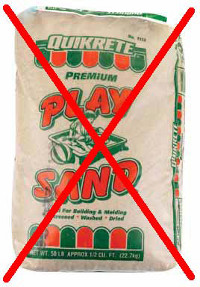
Most of you coming here may have never found my website if I didn’t use this term. I have always described my equipment as sandblasters even before this website was created. It is just the most used term that has subconsciously sunk in my head through many years of working with it for smaller projects around the garage and with my hobbies.
The sandpaper industry still uses the word “sand” to describe its products even though sand is not used. Some of the common materials found in sandpaper are garnet, aluminum oxide, and silicon carbide. It is a little bit surprising to me that sandpaper manufacturers haven’t phased the word out. I suspect they haven’t phases the term out because it isn’t as important due to less dust being created and the correct abrasive is already supplied to the paper for consumers which doesn’t cause a misunderstanding in them using the wrong abrasive.
Abrasive with High Silica Amounts & Correct Type
With that being said, you should know that sand contains a high amount of silica which is released into the air in a dust form upon impact during blasting. Do not use regular sand, play sand, any form of sand, or silica containing abrasive when blasting. I discussed about this a few years ago in this post about silica and in this interesting post.
Also, do not use any type of abrasive that contains a large amount of silica. Use only blasting approved abrasive because most of it has very little to no silica. You may download and read my free ebook here which lists some of the typical safe abrasives to use. Even though glass is traditionally known to have high amounts of silica, glass blasting approved abrasives such as crushed glass and glass beads have almost no silica because it is made from chemically inert soda-lime glass.
Silicosis
Sand and other silica containing abrasives should not be used because the air-borne silica can be breathed in and cause silicosis. Silicosis is a horrible lung disease which can prevent it’s efficiency of breathing in oxygen and cause breathing problems.
Terms of Use
Using this website, you must agree that I will not be liable for using the words “sand”, throughout any of my words, web pages, and ebooks. Don’t use sand. Please note that when I am using the word “sand”, I am generally referring to a granular abrasive of only approve blasting medias.

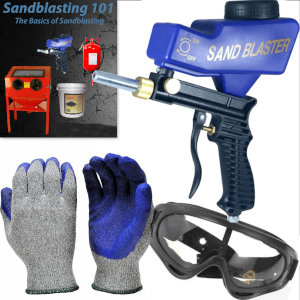

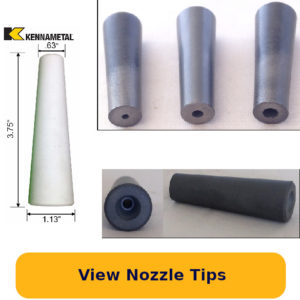
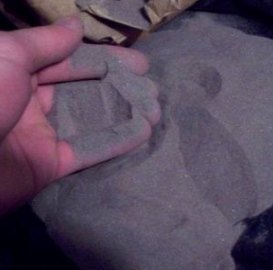
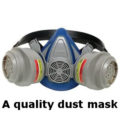
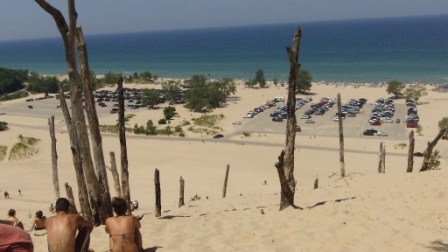
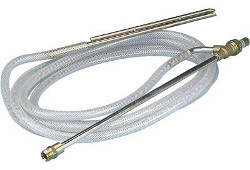
Thank you so much for this well written and informative report.
Very well written article. It is amazing to me how something like a long time term can stir people up so much. When I refer to blasting in my business I use the term “media blasting”, which takes into account what is used to blast with without naming the actual media. If it is crushed glass, walnut shell, alum oxide, plastic etc., it is covered by the term media. I have people ask me when I use the term media blast, what it is. When I say sand blasting without using sand, then they understand. I know a couple aluminum mold builders who still use “white graded sand” to blast their molds with. The people that do the blasting are “suited” up and have a hood that provides clean air for breathing.
Thanks for your great articles and always providing awareness to “sandblasting” or from now on abrasive blasting.
GR8 reminder, with “warm weather” and outside blasting on the horizon!
I am retired, and I spend my spare time maintaining, and restoring vintage Garden Tractors. Some of the are over 40 years old, and do build up a reasonable amount of surface rust. Due to the irregularity of a lot of parts, Blasting is the only real method of removing rust/paint prior to re-painting them. Sand, ’cause its cheap was a first choice, but found to be ineffective. Glass beads are relatively expensive. So I switched to…
“Black Diamond Granules”; coal slag abrasives used as a blasting media to remove paint and rust from surfaces to produce a clean, ready for repaint finish. Black Diaond coal slag granules are very hard and angular in shape, making their cleaning speed and cutting ability very efficient and productive. Black Diamond coal slag also has very low free silica content(less than 2 percent). This is a single use media. Reclaiming media can be a waste of time and effort. Density: 80-90 lb./cu. ft. Specific Gravity= 2.65 (1 bag is about 0.7 cu.ft. of media. Low dust 20/40 grit 50 lb. bag 0f 20/40 grit about $8.50 (w/tax).
Thanks for the continuing remindewr of the dangers of sand Eric!
Great points Wayne! I agree coal slag is a great media and has a fair price tag. Crushed glass is another good one that many people use once and don’t bother cleaning it up because it can be inexpensive if bought in large quantities.
Thanks for the great wealth of knowledge that you share with us Eric. While most know of the dangers it is still good to review those things especially for the beginners. Always looking forward to the info you give on your websites.
Good advice sir….
Back in 1978, I cleaned the paint exterior from a two-story house with nothing more than goggles and a cheapy dust mask. Only God knows why I don’t have Silicosis today. Today we’re more knowledgeable about airborne particulates and Sand is up near the top of the list.
There are a myriad of alternatives to using sand, so don’t. Here’s a useful link at Norton Equipment “http://www.nortonsandblasting.com/nsbabrasives.html”
As for people giving you grief about using the term “Sand Blasting”, it’s a superiority problem on their part, so just ignore them. Sand Blasting is a highly recognizable term. Abrasive blasting can mean anything from using explosives, to giving someone a good tongue lashing on Social Media. Just call it “sand Blasting”. Once you have their attention you can explain the differences, and why there’s no Sand in Sand Blasting anymore.
Hi everybody. I am thinking to start up a ” sandblasting” business. Well, I mean glass etching, wooden signs, stone blasting etc etc. NO PAINT REMOVING or other jobs like this.
I just discovered that sandblasting is forbidden in Europe ( I live in The Netherlands,but i am not Dutch) due to silica. Here is my question.
Does aluminium oxide contain silica? Looks like its one of the most popular media. Would it be good for glass etching and blasting wood signs? Is aluminium oxide hard enough to blast into stone? Maybe there is cheeper (but safe) alternative for this kind of jobs?
I appreciate all answers and sorry if my question is not in the right place.
I have found the information shared by Eric to be most helpful in my finishing and re-finishing endeavors. I even started a successful abrasive blasting, pool tile restoration business after using the techniques found herein. This information has saved me many dollars over the years by avoiding the trial and error process.